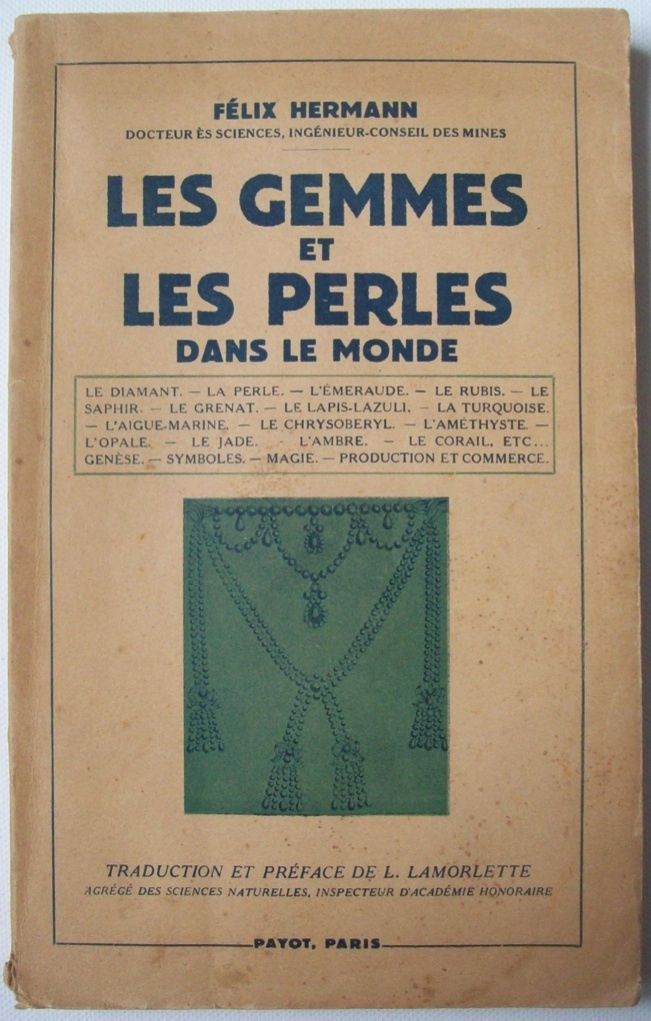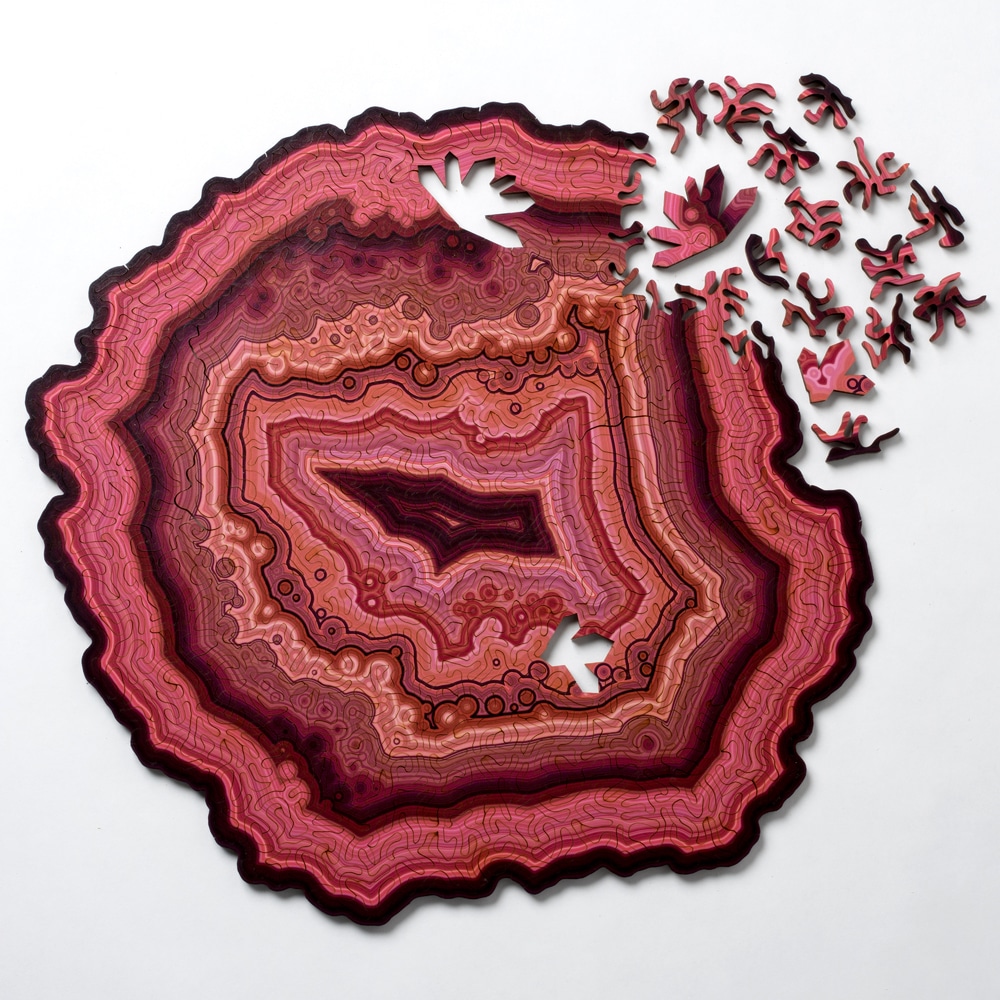I collect some old books. Originally, I am not really a collector, but my friends and family have a common passion for finding me at flea markets and other antique book fairs, usually dealing with jewellery and gems. You might say that’s surprising!
I had to admit that I had a small collection of books when I cleaned out my library a few months ago. And I must admit that I do add to it myself from time to time. This was the case today. All it took was a little time and a bookshop for me to find a gem!

This book, which dates from 1949, was written by Mr Felix Hermann, a doctor of science and consulting engineer at the mines. He was specialised in pegmatites and had a passion for gems.
If I take a few minutes to tell you about this book, it is because like all old books dealing with gemology, one often finds in it some truculent descriptions and compilations of erroneous information but which make gemologists smile. Moreover, the information given in these books is often not sourced. There is a bibliography at the end of the book, but without any link to the text. So, when a colleague and I leafed through it, we laughed a lot. So I’m quoting you some passages that we particularly liked!
However, I want to make sure that I am understood. I am not making fun of Mr. Hermann, the way he writes is typical of a man who has done important studies in the middle of the 20th century. It is clear, however, that the design of a scientific book does not meet the same standards of writing nowadays. And that makes you smile!
“How many legends and tales have inspired the pearl, that delicate opaque globule whose soft, cool shimmer has fascinated men through the centuries.”
“The emerald is wonderful for lovers. Its luminous green darkens to a livid brown as soon as the lover who offered it is unfaithful to the beloved.”
“Under the incessant and inexorable action of atmospheric agents, implacable levellers, which destroy the earth’s reliefs as Death’s scythe mows down the living (…), the least resistant minerals will be worn away by friction or dissolved (…), the precious stones (…) will remain intact.”
“It is said that when swallows had brooded for seven years in the same nest, the swallow stone could be found there. It was an energetic remedy, especially for eye ailments.”
“On the birth of the diamond, that brilliant brother of the black coal…”
So here are some nuggets and twists from this book which will join my collection of old books on gems.
See you soon!







